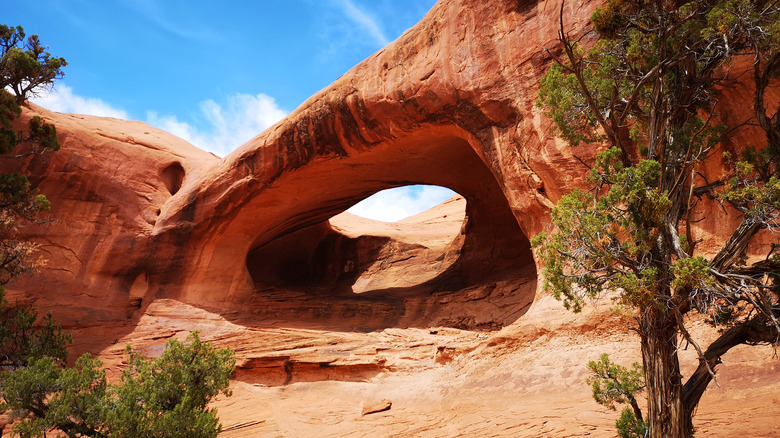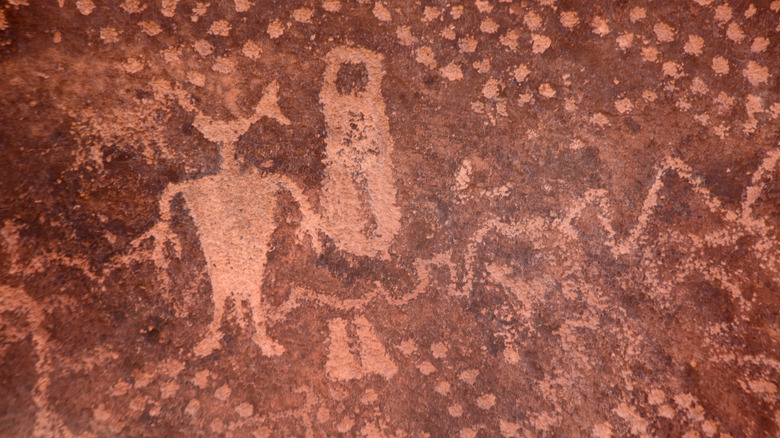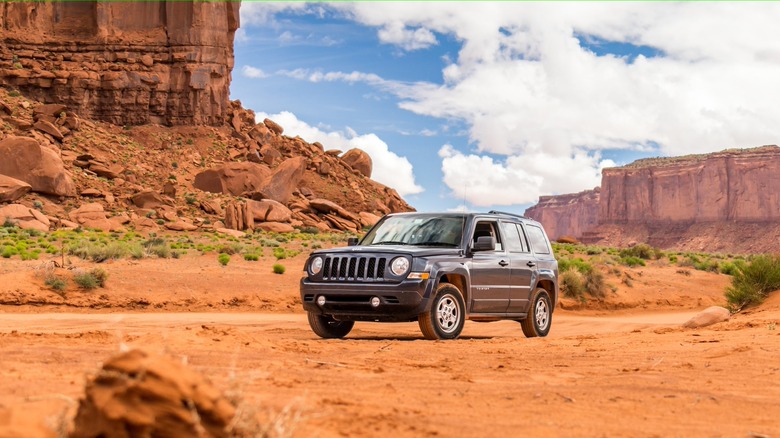Explore Breathtaking Canyons And Ancient Red Rocks At This Under-The-Radar Arizona Valley
Arizona is famous for its stunning landscapes, from the Grand Canyon to the hiker's paradise of Sedona, but tucked away in the depths of the Navajo Nation lies a relatively unknown, under-the-radar gem: Mystery Valley. This hidden valley, located in the south near the more famous Monument Valley (one of the 75 most beautiful landscapes in the world), offers visitors a breathtaking experience of towering red rocks, ancient petroglyphs, and secluded canyons. Far from the crowds, Mystery Valley provides a quieter, more intimate encounter with the beauty and ancient history of the Southwest — but only with a local guide.
Mystery Valley — with its vermillion sandstone formations and Mars-like desert landscapes that feel almost cosmic — was once entirely submerged underwater. Over millions of years, the natural forces of erosion have slowly done their job, leaving behind the sun-dried valley that exists today. Mystery Valley gets its name from the numerous ancient ruins and petroglyphs scattered throughout the area, which have fascinated archaeologists and travelers alike. These rock carvings and cliff dwellings date back thousands of years to the time of the ancient Ancestral Puebloans, who once inhabited this region from 100 B.C. to 1300 A.D. Ancestral Puebloans are sometimes referred to as the Anasazi, but this term is considered controversial.
The Diné tribe, a nomadic group from northwestern Canada, arrived here around 500 years ago and took over the abandoned dwellings of the Ancestral Puebloans — today, we refer to the tribe as the Navajo, though they still refer to themselves as Diné. Mystery Valley belongs to this tribe and is considered sacred land. While many flock to nearby Monument Valley for its iconic mesas and buttes (which you can still see in the distance!), Mystery Valley offers a more rugged and off-the-beaten-path adventure with deep insights into ancient geology and culture.
Discovering Mystery Valley on a guided Navajo tour
One of the main draws of Mystery Valley is the opportunity to explore its ancient petroglyphs and ruins. Scattered throughout the valley, these remnants of the Ancestral Puebloans offer a rare chance to discover the region's deep history. Petroglyphs — images carved into the rock — depict animals, people, and symbolic patterns, giving visitors insight into the lives and beliefs of the ancient inhabitants. In addition to the petroglyphs, several cliff dwellings and stone structures can be found hidden among the red rocks. These ancient ruins are remarkably well-preserved and provide a tangible link to the people who lived in the valley centuries ago.
Unlike other archeological sites in Arizona, Mystery Valley's ruins are relatively untouched and free from large crowds; the experience is personal, immersive, and peaceful. Although it is part of the greater Monument Valley Tribal Park, visitors must arrange a guided tour to explore Mystery Valley itself. Visitors will be guided through the area by Navajo guides who share stories and interpretations of the petroglyphs and ruins. The local guides also help navigate the rough terrain — make sure you don't break this cactus rule — and offer knowledge about the valley's history, geology, and cultural significance. Many travelers describe the visit as life-changing and spiritual. Tours usually last 3.5 hours. The best providers in the area include Navajo Spirit Tours, Dineh Bekeyah Tours, and Simpson's Trailhandler Tours.
Tips for your visit
Most tours of Mystery Valley are conducted in part on 4x4 vehicles, as the roads are rugged and unpaved. Tours typically include stops at key locations, such as natural arches, petroglyph sites, and ruins. Some of the most striking features include the Square House Ruin and the House of Many Hands, two well-preserved dwellings, and Big Hogan, a large natural amphitheater carved into the red rock. Skull Arch and Honeymoon Arch, two other highlights, frame stunning views of the surrounding landscape, offering surreal photo opportunities. For those looking for a more active adventure, some tours include hiking and scrambling opportunities, allowing visitors to explore the valley's canyons and rock formations on foot.
The best time to visit Mystery Valley is during the cooler months, from late fall to early spring, when temperatures are more comfortable for exploring the desert landscape. Summer can be sweltering, with temperatures pushing 100 degrees Fahrenheit, making outdoor activities challenging. Early mornings and late afternoons (especially around sunset) are sublime for catching the soft light that illuminates the red rocks, casting a warm glow over the valley. The area also offers unique opportunities for stargazing. The remote location, far from city lights, provides dark skies that are perfect for viewing the Milky Way and countless stars. Visitors who choose to stay overnight in nearby accommodations can enjoy this magical sight. Just be sure to avoid making this amateur mistake and account for time changes — Navajo Nation observes daylight saving time, while the rest of Arizona does not.


